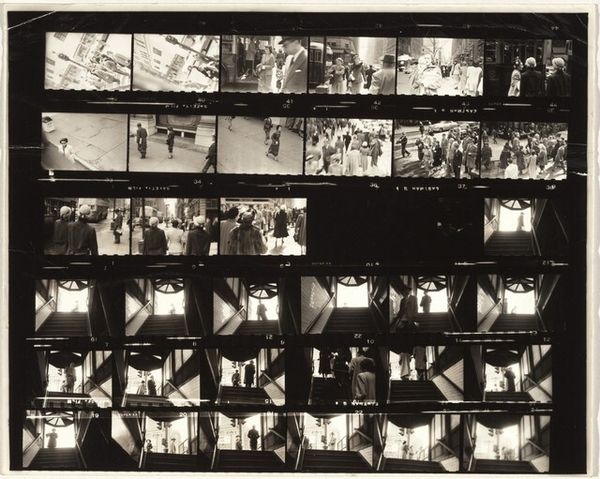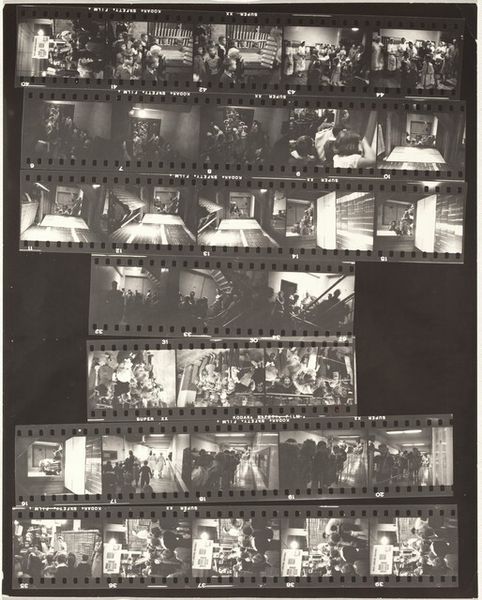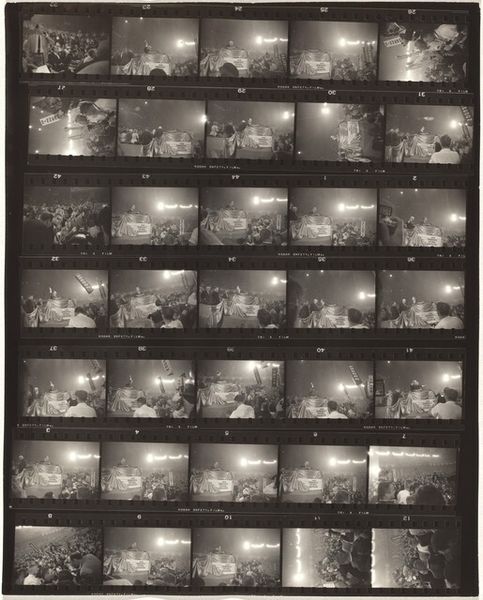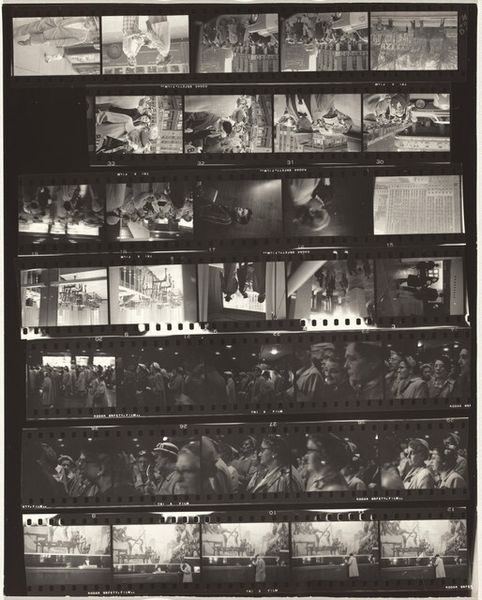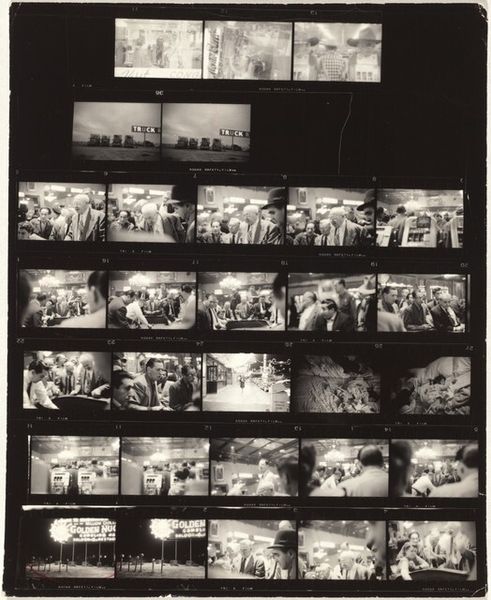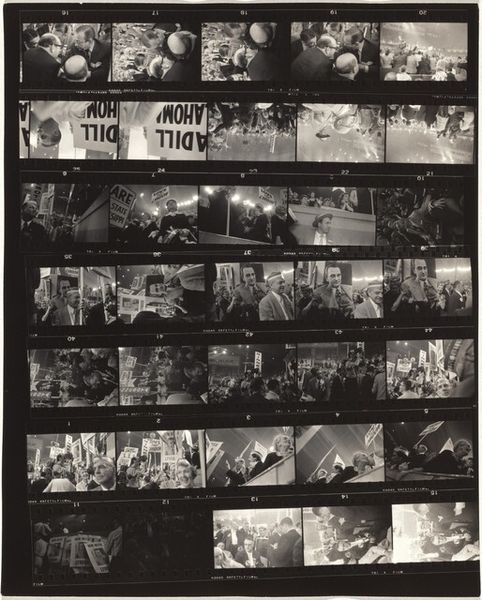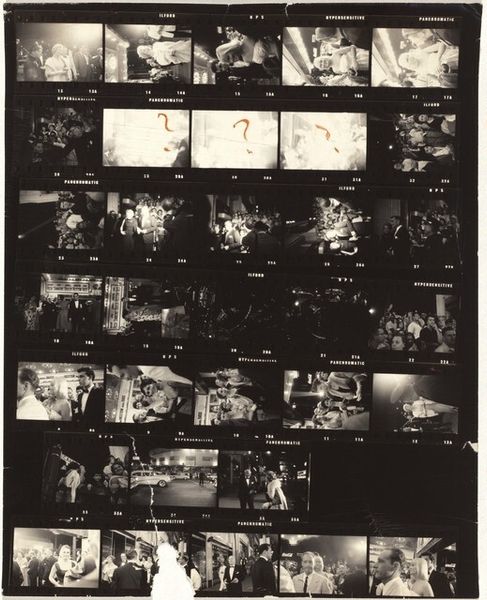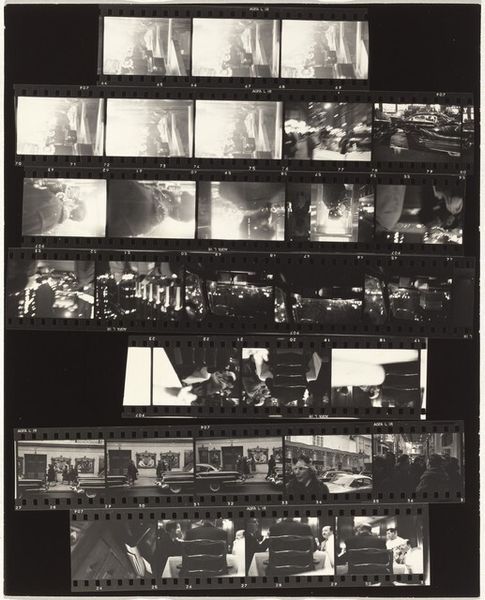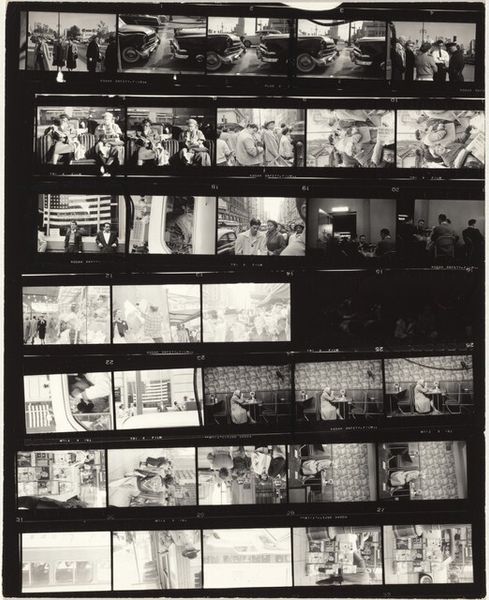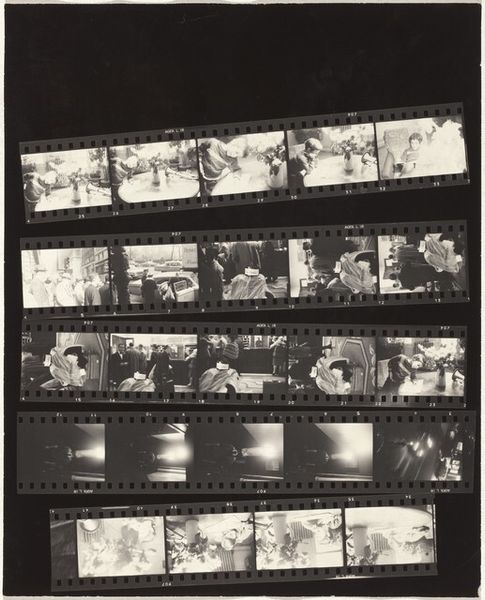
photography, gelatin-silver-print
#
film photography
#
wedding photography
#
street-photography
#
photography
#
gelatin-silver-print
#
monochrome photography
#
realism
Dimensions: overall: 25.3 x 20.3 cm (9 15/16 x 8 in.)
Copyright: National Gallery of Art: CC0 1.0
Curator: This gelatin-silver print by Robert Frank, titled "Cowboys no number," captures scenes from 1954. It presents a contact sheet showcasing multiple frames of a rodeo or similar event. The image presents as an indexical mapping of his encounter. Editor: It’s incredibly raw, isn't it? The grit of the rodeo comes right through. There's a visible materiality of light and silver in the contrasted moments, almost like the light is corroding time itself as we encounter it in the frame. Curator: I'm drawn to how the repetition and arrangement contribute to the work's formal properties. The grid-like structure contrasts nicely with the organic, unpredictable actions captured within each frame. Semiotically, each panel constructs a narrative, yet fragmented and open to interpretation. Editor: Agreed, and I find that this is directly related to the process. By showing the contact sheet, Frank emphasizes the selection process and reminds us that photography, no matter how "decisive" the moment, relies on this editorial construction. What he shows us is work. You can imagine the photographer immersed in the physical work, editing, ordering, touching, assembling—the trace of that manual labor. Curator: And the tonality! The shades of gray accentuate texture, heightening contrast to delineate shapes clearly while drawing you into specific points of visual tension. The composition in the selected frames further emphasize this pull and push, giving the sense of the event with a cinematic quality, akin to freeze-frames, capturing pivotal scenes. Editor: Consider also the limitations Frank faced with his equipment. He didn't have sophisticated post-production capabilities we have today; it was physical. Dodging, burning, chemicals all contributed to the making, highlighting what Roland Barthes calls photography’s inherent 'certificate of presence.' Curator: True, the limitations can inform how we view and assess art. Frank's choices enhance our reading of light and texture, as though the medium underscores what might escape unnoticed by a less meticulous eye. Editor: Precisely, the print stands as both documentation and physical artifact. It underscores how the manufacturing process, as a historical construct, is integral to what this picture can ‘mean.’ Curator: Indeed, it's an instance where Frank transforms a simple scene into an inquiry of visual language, the structure revealing its poetic power. Editor: Leaving us to consider how Frank made art visible in a time that was increasingly obsessed with photographic imagery, rather than what goes into image-making.
Comments
No comments
Be the first to comment and join the conversation on the ultimate creative platform.
